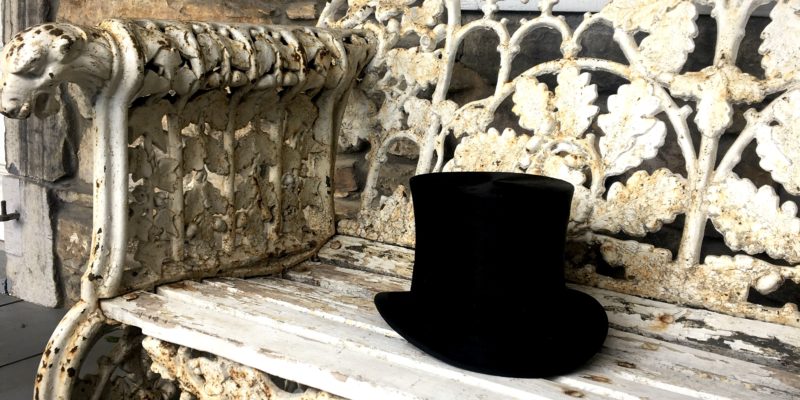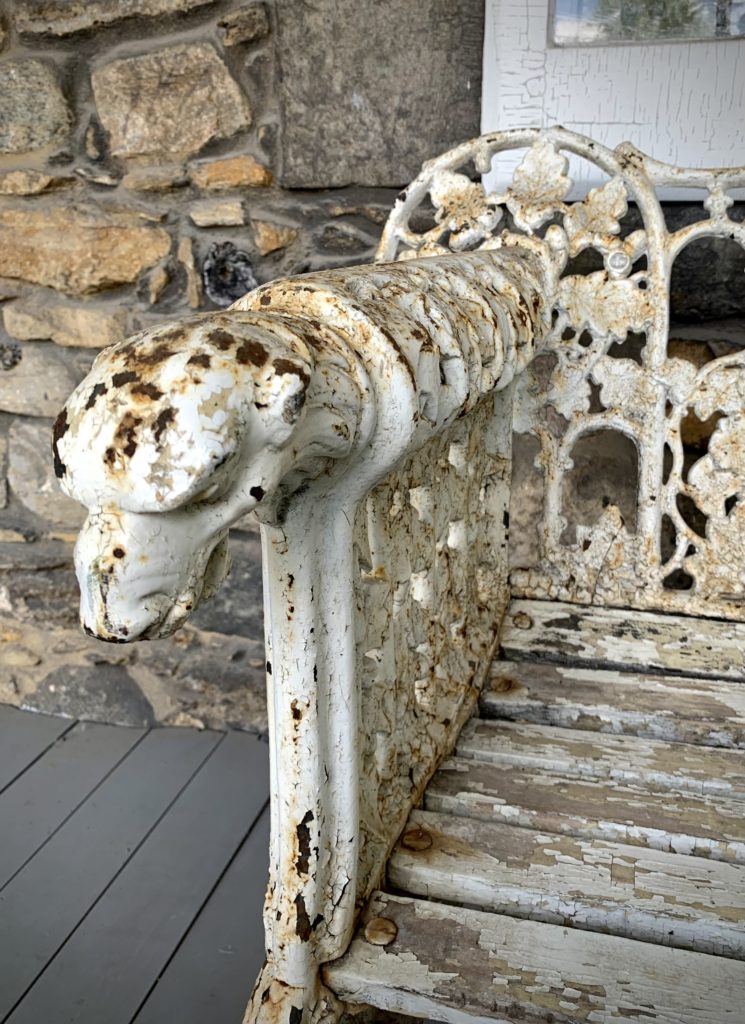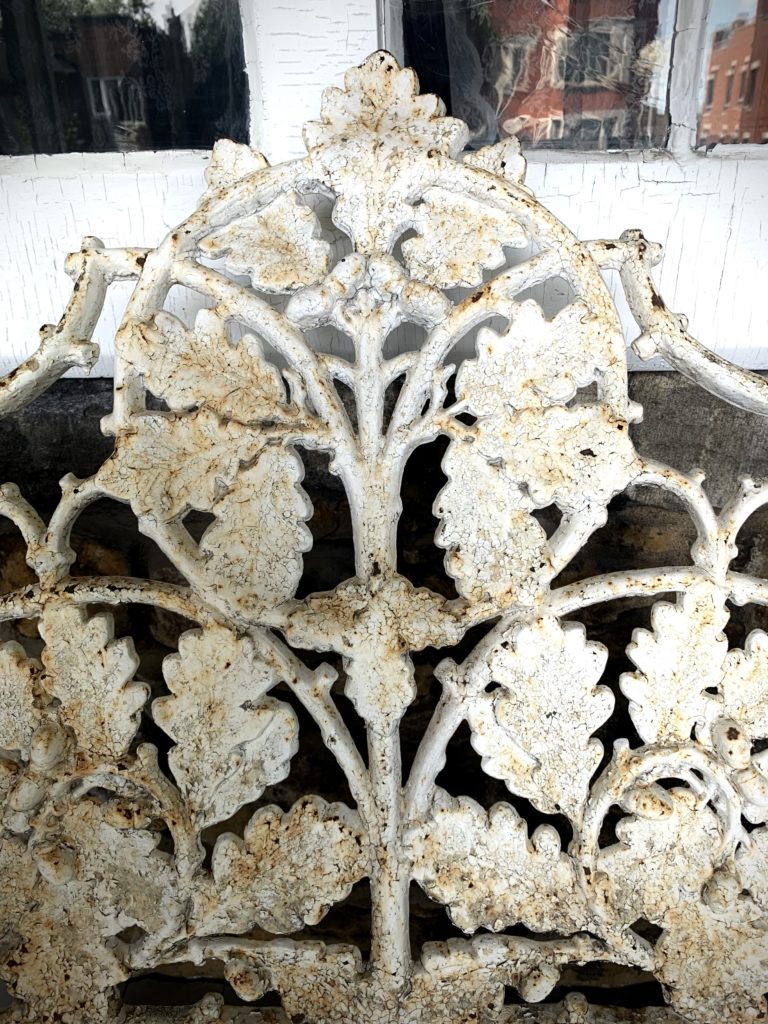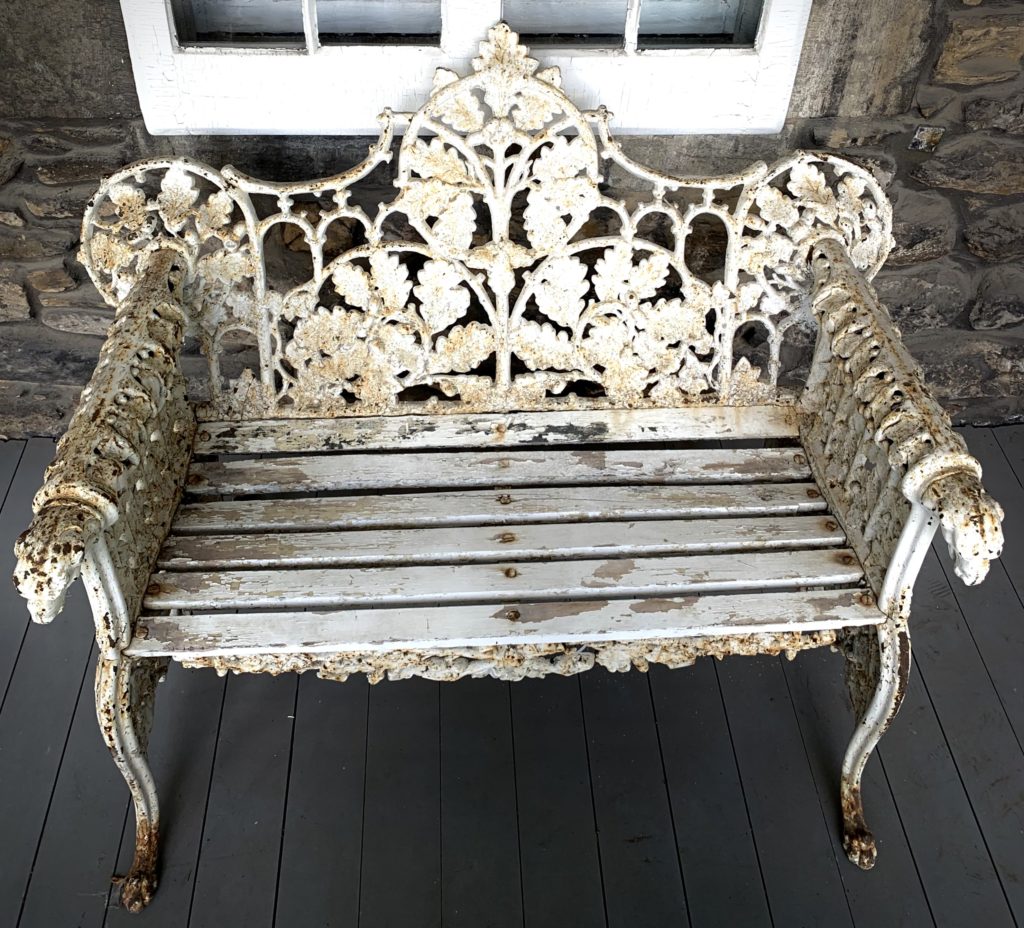Written by Delia Oltean –
In the barn near the Maison Hurtubise, the discovery of a magnificent outdoor wrought iron bench raised many questions as to its origin and history.
A two-seater bench, of which most of the furniture—i.e., the backrest, the armrests, and the legs—is composed of wrought iron crafted to create a set of arabesques and floral patterns. The seat, on the other hand, is made of wood. It is possible to assume that the bench must have been used outside the house as garden furniture.
There is very little information about the mystery around this piece of furniture. However, it is possible to know that the manufacturer of the bench is called The Coalbrookdale Company. Coalbrook, in addition to being the name of the manufacturer, is a village in England known for being the first place of mining and metallurgical development in the first phase of the Industrial Revolution in England (Montagne, 2007). Currently, the Coalbrookdale Museum of Iron has a bench in its archives identical to the one at Hurtubise House.
According to the information of this second bench in England, we can date the furniture around the year 1859. Apparently, at that time, a series of garden furniture (benches and chairs) were made of wrought iron, using different floral patterns. The one at the Hurtubise House is likely called the Oak and Ivy Chair (Stephen, 2015).
The reasons why the Hurtubise family could have owned this piece of furniture from the other side of the ocean are still unknown…
Sources:
- Stephen, G. A. (30 mars 2015). Oak and Ivy Chair. Coalbrookdale Museum of Iron. https://geotopoi.wordpress.com/2015/04/14/coalbrookdale-museum-of-iron-great-exhibition/coalbrookdale-museum-of-iron-20150330-18-oak-and-ivy-chair/
- Montagne, R. (2 Mai 2007). Coalbrookdale and the History of Coal Power. NPR. https://www.npr.org/templates/story/story.php?storyId=9955564



